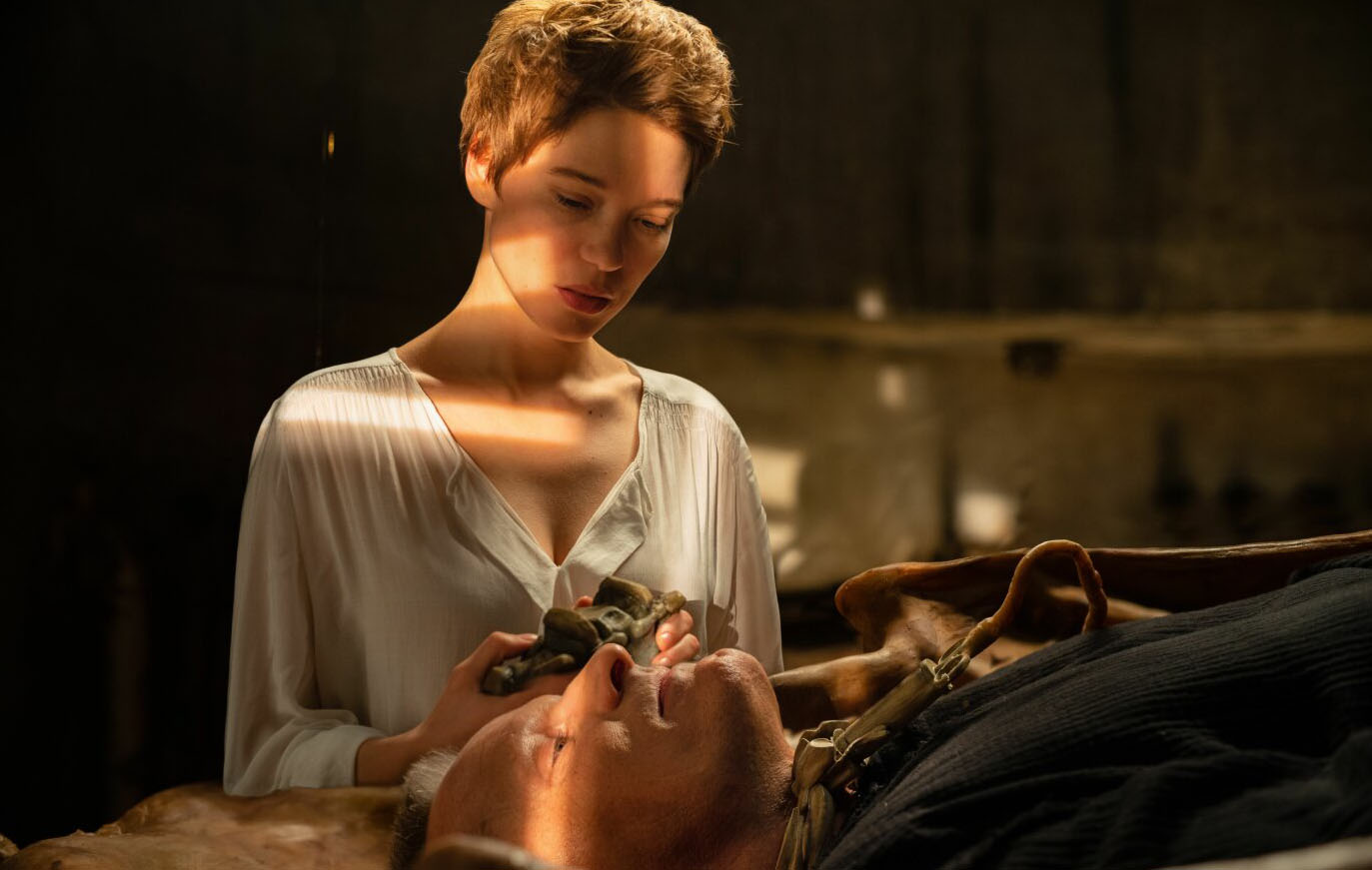
The opening image of David Cronenberg’s Crimes of the Future (2002) is arresting, enigmatic, exquisite, revealing an enormous capsized ship, long abandoned, surrendered to a second life as a symbol whose significance seems at once fecund and just beyond our grasp—much like the empty swimming pools that appear in the fictions of J.G. Ballard, the late English author whose work Cronenberg has adapted, both directly and indirectly, and with whom the Canadian filmmaker shares a meaningful artistic kinship. Rusting under the Mediterranean sun, that ship is a colossal cadaver, alive with decomposition, yet, as a vessel, immobilized. In this future, no one is traveling anywhere far. Discovery lies within.
Shot—though not explicitly set—in Athens, Cronenberg’s first feature in eight years is gloriously nonchalant with regard to world-building and exposition. The drama unfolds in some unspecified time and place without industry or internet, though there are vestiges of digital technology amid the analog. Cathode-ray-tube televisions, small-gauge cameras, and bulky vintage mobile phones intermingle with finger-ring spy cameras, suspended beds with body-responsive sensors and software designed to manage pain, and Mugwump-like medi-chairs that aid digestion but also rattle and thud like antique washing machines. Far from the sleek designs or polished surfaces found in latter-day Cronenberg works, Crimes of the Future is suffused with ambient decay: peeling wallpaper, oxidizing metal, grease-stained walls, flies. That aforementioned capsized ship is eventually complemented by an entire nautical graveyard. Human bodies are changing in both form and appetite. Many bodies are developing idiopathic organs that serve no discernible purpose. Masochism is a common coping mechanism. People huddle in darkened alleys to consensually cut each other, to enact what is derisively referred to as “desktop surgery.” In the film’s most outlandish sci-fi conceit, performance art is all the rage.
Two revered denizens of this underground scene are Saul Tenser (Viggo Mortensen) and Caprice (Léa Seydoux), comprising a kind of magician-and-assistant act that reverses gender norms along with most other norms. Saul grows the renegade novel organs and Caprice surgically harvests them to the awe and titillation of their audience—one of whom, Timlin (Kristen Stewart), an employee of the National Organ Registry, becomes so enraptured with a performance of theirs that she declares to Saul, in a quavering whisper, that “surgery is the new sex,” followed by a suggestion that she might like to join Saul and Caprice in a kind of artistic throuple.
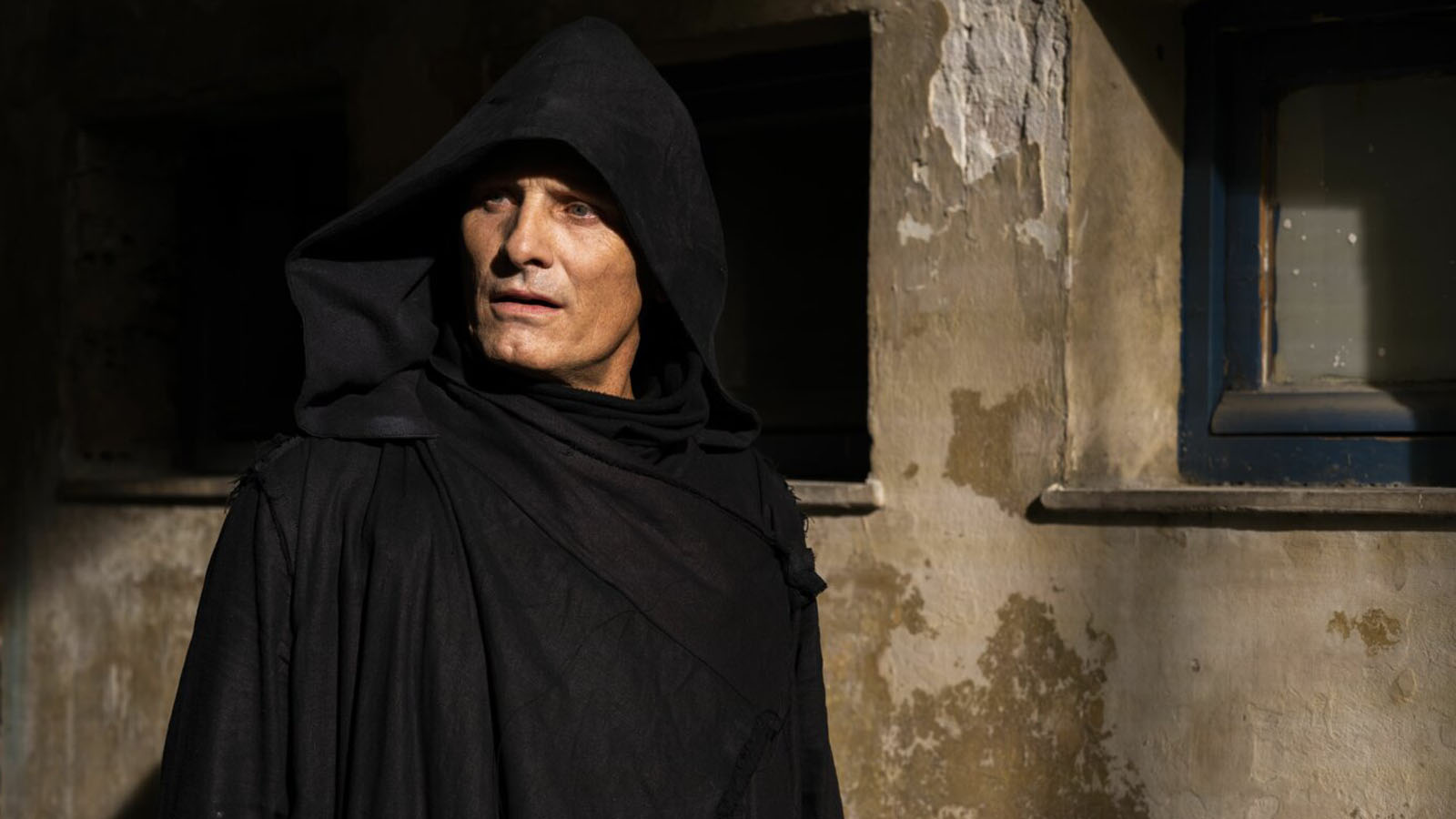 Saul could be regarded as something of an analogue for Cronenberg, or at the very least the embodiment of an idea of the artist that Cronenberg clearly cherishes. Will—specifically, the will to invite new organs and submit his body to creative incision—is described as Saul’s key artistic attribute. (Perhaps Bob Flanagan or Orlan could be seen as real-life precedents.) “He takes the rebellion of his own body,” Caprice explains, “and seizes control of it.” He is willing, for art’s sake, to expose his internal life—literally. It’s what’s inside that counts, even if no one yet fully comprehends the nature of the evolutionary leaps transpiring within Saul and his mutant brethren, such as the little boy who, early in the film, is seen eating a plastic trash receptacle. The boy may signify a paradigm shift: the first child born with a digestive system designed to consume the toxic products and by-products that represent the zenith and nadir of modern human endeavor. It’s the boy, and what becomes of his body, that contains the film’s secrets and suspense. When Saul asks the boy’s mother what she thinks they would find were they to cut the child open, she replies, “outer space.”
Saul could be regarded as something of an analogue for Cronenberg, or at the very least the embodiment of an idea of the artist that Cronenberg clearly cherishes. Will—specifically, the will to invite new organs and submit his body to creative incision—is described as Saul’s key artistic attribute. (Perhaps Bob Flanagan or Orlan could be seen as real-life precedents.) “He takes the rebellion of his own body,” Caprice explains, “and seizes control of it.” He is willing, for art’s sake, to expose his internal life—literally. It’s what’s inside that counts, even if no one yet fully comprehends the nature of the evolutionary leaps transpiring within Saul and his mutant brethren, such as the little boy who, early in the film, is seen eating a plastic trash receptacle. The boy may signify a paradigm shift: the first child born with a digestive system designed to consume the toxic products and by-products that represent the zenith and nadir of modern human endeavor. It’s the boy, and what becomes of his body, that contains the film’s secrets and suspense. When Saul asks the boy’s mother what she thinks they would find were they to cut the child open, she replies, “outer space.”
There is a way in which anyone who has followed the director’s output over the years might see Crimes of the Future as Cronenberg in aggregate: the body ports recall eXistenZ (1999); the outsize eroticization of pain and desecration recalls Crash (1996); the interrogation of the equation of art-making with suffering recalls Naked Lunch (1991); the medical procedure as spectacle recalls Dead Ringers (1988); the use of fantastic biological innovation as a way of addressing age and disease recalls The Fly (1986); the high-philosophical slogans recall Videodrome (1983)… I could go on. I haven’t even mentioned Cronenberg’s earlier work entitled Crimes of the Future, the 1970 ultra-low-budget mid-length film that foreshadows so many signature themes. Yet, despite concerns over the septuagenarian director’s retirement from filmmaking following the 2014 publication of his debut novel, Consumed, the 21st-century Crimes of the Future is no victory lap, no greatest-hits collection, no attempt to tidily arrive full circle. There is no air of self-satisfaction. Rather, this latest film is animated by fierce inquiry, imaginative rigor, and an engagement with the world we live in right now. The fact that Cronenberg conceived the project over two decades ago hardly negates its resonances: as with Ballard’s work, effortless prescience sometimes accompanies Cronenberg’s vision.
Crimes of the Future is a paragon of craft and storytelling on the part of its entire creative cohort. It may sound banal, but it makes an enormous difference to this sometimes-baffling film’s sense of internal coherence that its director possesses such an elegant understanding of when to use a single, a two-shot, a wide; and when to push in from a distance or assume an overhead view; all the while making inventive, resourceful use of the Athenian locations. Cinematographer Douglas Koch endows the chiaroscuro interiors and sun-bleached exteriors with an alluring sense of depth. Longtime collaborator Carol Spier’s production design serves both the fetishization of small-scale paraphernalia and the panoramic view, while Howard Shore, who like so many prolific Hollywood composers is only any good when matched with a distinctive director who embraces high style, elevates the film’s drama and innate rhythms with a score combining strings and synths: Mahler meets Vangelis. What is perhaps most reassuring in Cronenberg’s return is the maintenance of his total trust in the power of his creations—and total disinterest in belaboring them as sweeping spectacle. Nothing is needlessly dwelled upon. In this sense Cronenberg is the opposite of Guillermo del Toro, an intelligent, enormously likable filmmaker with some shared preoccupations, but who, unlike Cronenberg, never crafted a killer still he didn’t want to cast in amber with, say, a prolonged, ostentatious crane shot. (For those who have seen Crimes of the Future: if Cronenberg is Saul, GDT is definitely the dancing ear-man.)
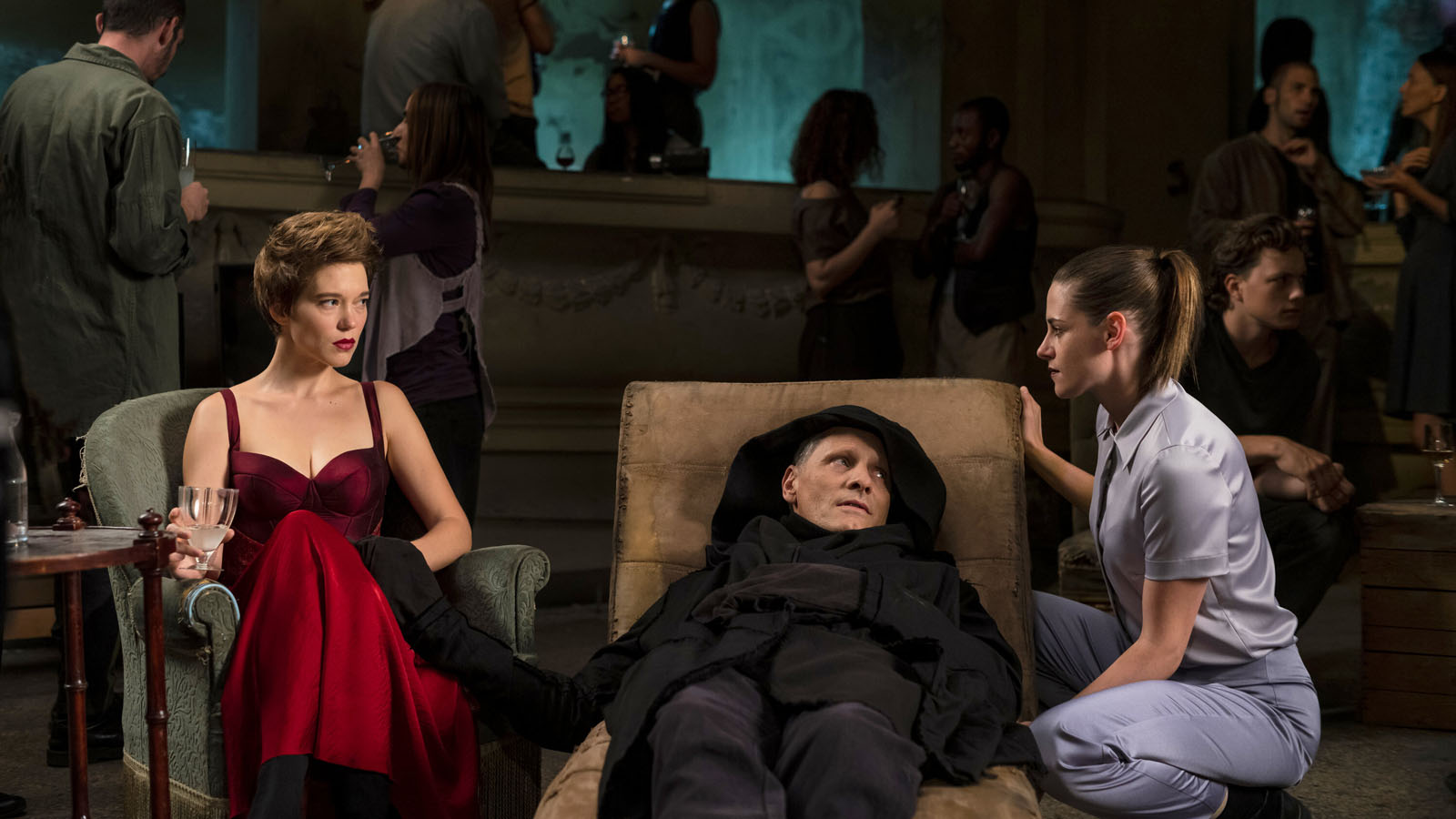
Crimes of the Future is likewise brimming with performances from several high-profile actors who, somehow, seem to possess an intricate collective understanding of the film’s exceedingly particular tone. Mortensen, in his fourth portrayal for Cronenberg, roots his character in a mix of fascination and profound exhaustion with his body’s relentless creations, while giving perhaps his most sheerly charismatic performance to date. In what emerges as a love scene—“Maybe this is just for us,” says Caprice—Mortensen’s multitiered response to a tender come-on is captivating in its wordless minutia. Among the reasons why Mortensen is the director’s ideal protagonist is his ability to convey the delicate intimacies, complex relationship dynamics—think of the marriage in A History of Violence (2005)—and dense emotional sediment underscoring Cronenberg’s surface of perversity and strangeness.
As an official at the National Organ Registry, Don McKellar, who appeared in eXistenZ, deftly navigates a liminality that requires gradations of both melodramatic verve and fleshy naturalism. Though Stewart initially plays Timlin’s nervousness a little too hard, recalling her early, fidgety work, she quickly grows into the character’s feeling of being overwhelmed by waves of attraction and unease. But out of everyone in the film’s leading roles, Seydoux is the revelation, at once disarmingly affecting, totally committed, and, above all, dynamic. There is a scene in which Caprice meets a fellow body artist: a woman who could be a model or a movie star, and who praises the plastic surgeon working on her body by explaining that he’s the first to understand that she doesn’t want to be more beautiful. Nothing in this exchange is overplayed, yet Seydoux’s immediate response to the moment, and its reverberation in later scenes, speaks volumes about the desire for a transcendent transfiguration that moves beyond the inane confines of beauty standards. One of the elements that make Cronenberg’s films so potent and enduring is his insistence on respecting his intuition, on staging scenes from his most oneiric and fraught fantasies with minimal internal censorship. Casting actors as empathic and insightful as Mortensen and Seydoux ensures that these manifestations take on greater resonances.
Crimes of the Future ends as so many Cronenberg films end: by pushing in on a close-up of a single figure, a wordless micro-scene depicting a man in a state of profound disquiet or ecstatic discovery. After many strange twists and reveals, we are left suspended, our story arriving not at a resolution, but rather at a turning point. Cronenberg has created a cinematic space that, not unlike a virus, is designed to disseminate, to burrow into our consciousness, and linger long, like the traces of a fever dream. Closure has been annexed. Wonderment trumps despair. The future remains unwritten. 🩸
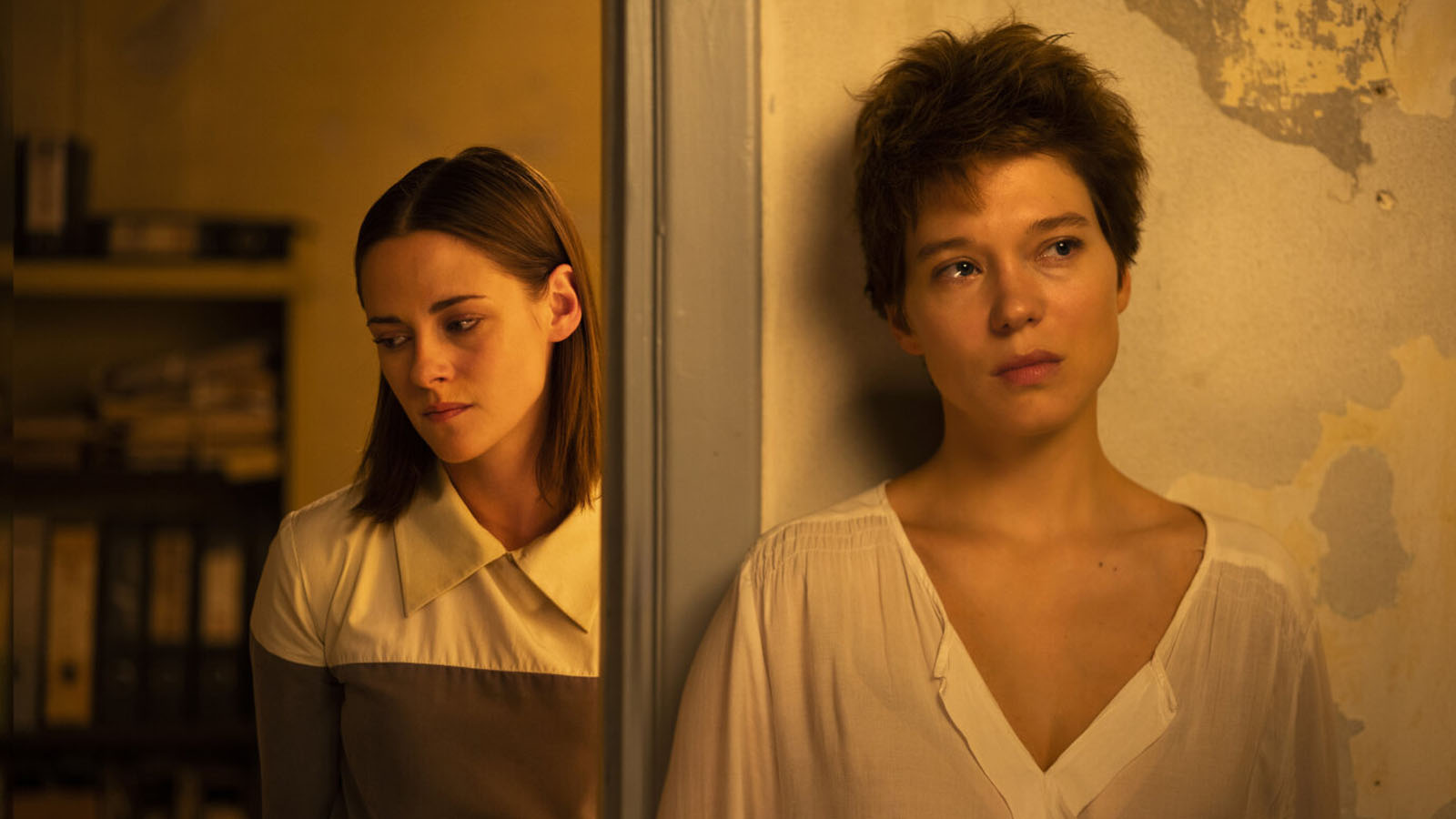
is a freelance critic and playwright.
The title of David Cronenberg’s latest film resonates in myriad ways. “The Shrouds” is the name of an exclusive Toronto cemetery co-owned by inventor/entrepreneur Karsh (Vincent Cassel), whose company, GraveTech, offers clients...
BY JOSÉ TEODORO | April 15, 2025
It’s an unfortunate fact of life: even super-smart women sometimes end up with terrible boyfriends. This, along with a very different tragic, universal reality—everyone’s body radically changes and deteriorates with illness...
BY VIOLET LUCCA | October 31, 2022
Before we assess the villain, let’s begin with the hero—and “hero” is the correct appellation for...
BY JOSÉ TEODORO | November 3, 2024

This pre-Code offering packs a lot of story into its typically brisk running time, with several plot threads weaving together a (not always successful) tapestry of spooky and criminal doings.
READ MORE >
BY ANN OLSSON | Month 00, 2021
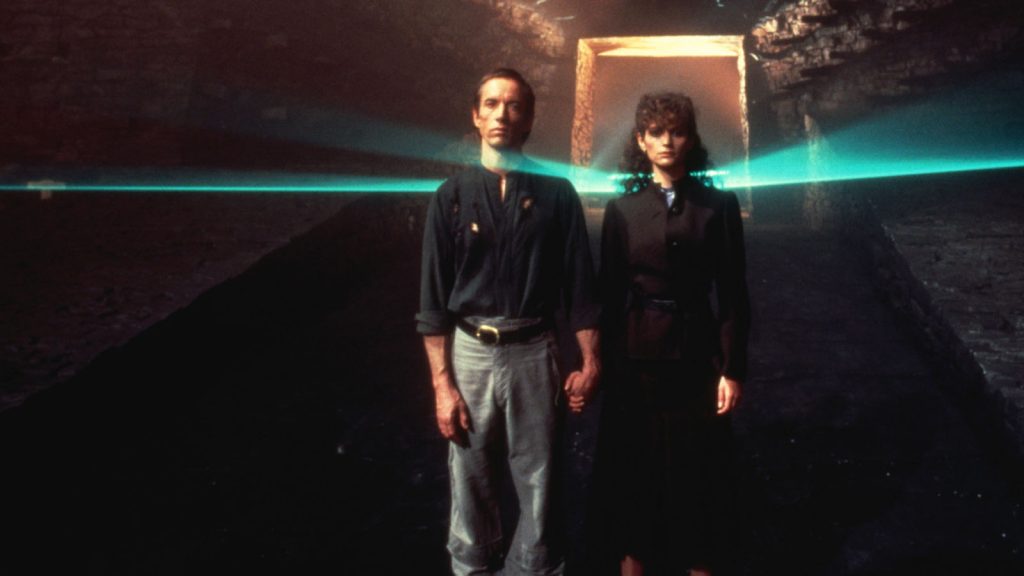
In what could be the fastest-resulting rape revenge movie, a drunken lout brutally forces himself on Ida, the young woman who doesn't return his affections, during a party over Labor Day.
READ MORE >
BY LAURA KERN | Month 00, 2021
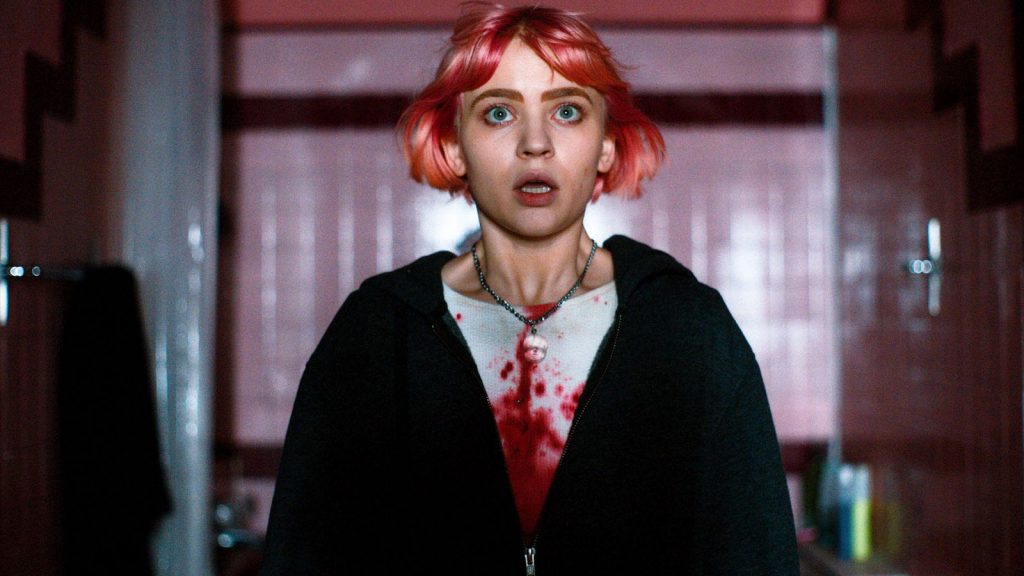
Beast is a lot of movies in one package - fractured fairy tale, belated-coming-of-age story, psychological drama, regional horror film - but above all it's a calling card for its leading lady, Jessie Buckley.
READ MORE >
BY LAURA KERN | Month 00, 2021